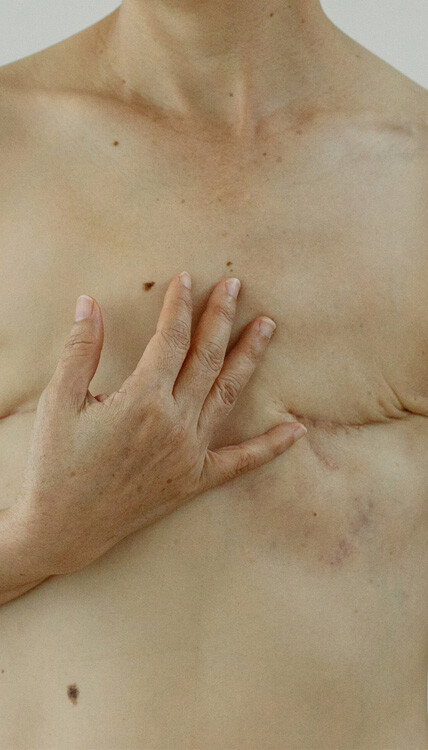KEY TAKEAWAYS:
- Factors such as skin envelope, breast size, and body habitus influence the process of implant-based reconstruction surgery.
- A multidisciplinary approach involving collaboration with oncologists, breast surgeons, and radiologists is essential for achieving the best results.
- Proper support and sizing of the implant are crucial for creating a natural, aesthetically pleasing reconstructed breast.
Introduction
Implant-based reconstruction surgery is a common option for breast cancer patients who have undergone mastectomy or lumpectomy. This procedure helps restore the appearance of the breast and can greatly improve patients’ self-esteem and confidence. Dr. Effie Politis, a plastic surgeon in Tampa, FL, explains the various factors that influence the process of implant-based reconstruction surgery and the importance of a multidisciplinary approach to achieve the best possible results.
Evaluating Skin Envelope, Breast Size, and Body Habitus
The first step in the implant-based reconstruction process is to evaluate the patient’s skin envelope, breast size, and body habitus. These factors play a crucial role in determining the most suitable reconstruction technique and implant size for each patient. By taking these factors into consideration, the plastic surgeon can create a personalized treatment plan that addresses the patient’s unique needs and goals.
Working in a Multidisciplinary Approach
Dr. Effie Politis emphasizes the importance of working in a multidisciplinary approach when performing implant-based reconstruction surgery. This involves collaborating with other specialists such as oncologists, breast surgeons, and radiologists to ensure a comprehensive understanding of the patient’s condition and treatment needs. By working together, the team can develop a cohesive and effective plan for the patient’s breast reconstruction surgery.
Reconstructing Natural Anatomic Landmarks
Once the breast surgeon has removed the breast tissue, ligaments, and tail of the breast, it is the plastic surgeon’s responsibility to reconstruct the natural anatomic landmarks. Dr. Effie Politis explains that this involves creating a mound using an implant and a supportive scaffold or structure. This ensures that the reconstructed breast has the appropriate shape, size, and position.
Supporting and Sizing the Implant
The implant used in breast reconstruction surgery cannot be placed directly under the skin; it must be properly supported by re-establishing the lateral anatomy, folds, and cleavage area. Furthermore, it is essential to size the patient for the correct implant to be used during surgery. This ensures that the reconstructed breast is proportionate to the patient’s body and provides a natural, aesthetically pleasing result.
Politis Plastic Surgery: Expert Care for Breast Reconstruction Patients
If you are a breast cancer patient considering implant-based reconstruction surgery, trust the expertise and compassionate care of Dr. Effie Politis and her team at Politis Plastic Surgery in Tampa, FL. With a multidisciplinary approach and personalized treatment plans, Politis Plastic Surgery is dedicated to helping patients achieve the best possible outcomes in their breast reconstruction journey.
TRANSCRIPTION:
Hi, my name is Dr. Effie Politis with Politis Plastic Surgery.
Implant-based reconstruction, again, applies to the majority of our patients. So what we do is we evaluate their skin envelope, their breast size, body habitus, and we formulate a plan in conjunction with our breast surgeon. We work in a multidisciplinary approach. That means we work with their oncologists, their breast surgeons, their imaging specialists or radiologists.
We make sure we understand whether the placement of the tumor and how we can place our incisions to remove the breast. The breast surgeon removes the breast, but when that happens, they obliterate or they basically remove all the ligaments, the breast tissue, all the ligaments, the tail of the breast.
So my job is to go in and reconstruct the natural anatomic landmarks and then reconstruct a mound. Again, I typically use an implant to make the mound with a scaffold or supportive structure. So you can’t just put an implant under skin. You have to, again, re-support all the lateral anatomy, the folds, the cleavage area, and then you have to size the patient for the correct implant to be used in surgery.
REFERENCES:
- “Implant-Based Breast Reconstruction | Mount Sinai – New York.” https://www.mountsinai.org/locations/west/care/surgery/breast-reconstruction/implant-based-reconstruction.
- “Breast Reconstruction Options | American Society of Plastic Surgeons.” https://www.plasticsurgery.org/reconstructive-procedures/breast-reconstruction/techniques.
- “Breast Implant Reconstruction – Breastcancer.org.” 22 Nov. 2022, https://www.breastcancer.org/treatment/surgery/breast-reconstruction/types/implant-reconstruction.



